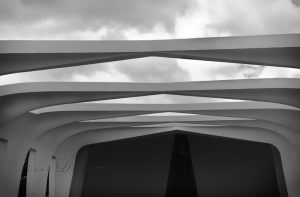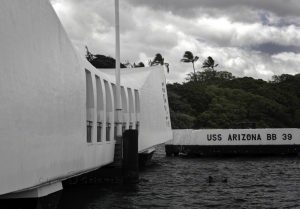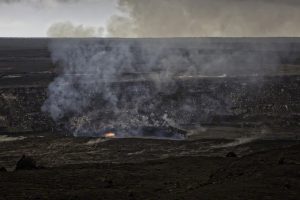Vacation Shooting
In my analysis of what I shoot and where I shoot photographs, it is quite clear that I do, indeed, have a restricted range of times and subjects. This has becomes even painfully obvious to me after meeting with professional and very avid photographic enthisiasts. These latter photographers place a high value in going to places which maximize their chances of some great photographs, e.g., shooting volcanic eruptions from helicopters or from boats at sea, not to mention just taking off at the spur of a moment (on a flight several hundred miles away) to capture the Northern Lights over a particularly interesting foreground object.
“You must go to interesting places to take interesting photographs,” is what I am told. I do not doubt this, but there is a rebellious element/genie within me which says that there are great and wondrous moments all around oneself if one is open to seeing them. I truly believe this also. However, placing oneself in a propitious place is far easier than searching out the miraculous moment in the ordinary.
Such is the conflicted state I find myself in: Do I devote more time and energy into placing myself in places which will yield good photographs? Or, do I continue to make escapes or vacations to places which may produce opportunities for good shots, or do I go the extra mile to shoot, trying to find the miraculous in the ordinary?
The currently posted shot if of the USS Arizona taken while on vacation to Hawaii. I was lucky to actually get a ticket to travel to the monument, but when I got there it was so crowded that trying to capture the solemnity of the place where so many died was almost impossible. Added to this situation was the fact that I had on a 70-200m lens (because I could not take my other gear because bags were not allowed on the boat to the monument). I was forced to shoot with the canon 70-200mm lens. And then “take out” some visitors peering through the openings along the monument side using Photoshop.
The current shot was taken with a Canon 5 DS, EF70-200mm f/4L IS USM @ 70mm, f/10, 1/60″, -1/3 stop, 200 ISO, using DxO Optics Pro, a gradient map, and Color Efex Pro.
Smell the Roses
 While no posts were forthcoming in July, I had been busy going through my 3000+ images from the Hawaii shoot. Admittedly, while I did reach the 1% keeper goal of about 30-40 photos, this process in itself created challenges within me to see things I had not considered or even forgot when I was actually taking the said photo “keepers.” In other words, so much time and so many different scenes have come in between the actual shots and then the processing of these shots that I had forgotten many of the details. Note: the major ones I remembered, but the nuances to many shots were lost to memory. Even while I was taking these many shots in Hawaii I wish I had a way to record along with the photos themselves (a tag, if you will) what I was actually thinking or trying to do at the time.
While no posts were forthcoming in July, I had been busy going through my 3000+ images from the Hawaii shoot. Admittedly, while I did reach the 1% keeper goal of about 30-40 photos, this process in itself created challenges within me to see things I had not considered or even forgot when I was actually taking the said photo “keepers.” In other words, so much time and so many different scenes have come in between the actual shots and then the processing of these shots that I had forgotten many of the details. Note: the major ones I remembered, but the nuances to many shots were lost to memory. Even while I was taking these many shots in Hawaii I wish I had a way to record along with the photos themselves (a tag, if you will) what I was actually thinking or trying to do at the time.
That being said, I was forced in hindsight to find another way to accomplish the above. What I decided to do was allow myself to “Be” with the shot (I know this sounds corny and hackneyed); in other words to stop and “smell the roses.” If there was a shot to begin with, then I should be able to recover it within perceptual memory.
Honestly, this is not an easy process, but it does work.
The current photo to this post is of the USS Arizona Memorial looking upward. I’ve always felt a reverence for Pearl Harbor and the lives that were lost. I felt privileged to be able to visit this site, but upon arriving I found that the sheer number of visitors actually detracted from the solemnity of the site. This is not to cast aspersions on anyone about the actual memorial but it was difficult to find peace and reflection with so many visitors coming and going. The positive is that Americans still care and feel deeply about this event.
There was definitely a solemnity to the Harbor and I tried to capture it photographically. One way I did this is to look skyward from where the bombs fell, and I found a unique ceiling to the Memorial, intended or not in it design, I do not know. Nonetheless, it was beautiful and reflected the simplicity of the sacrifice that many men gave for their country.
The posted photo was taken with a Canon 5 DS, EF 70-200mm f/4L IS USM @ 70mm, f/10, 1/500, ISO 400, -1/3 stop compensation, processed with DxO Optics Pro 11, using a Gradient map, and Color Efex Pro.
Existential Opportunities
- At August 25, 2017
- By Firstmate
- In Canon EOS 5DS, Hawaii, Long Exposure
 0
0
Hawaii presents itself as a paradise, and aptly so, since one can fashion his/her ideas around what they consider to be paradise wherever they find themselves: namely, there is something about an: island-an almost perfect climate-and the isolation/uniqueness of terrain— which lends itself to believe fantasy-can-come-true (“Fantasy Island”, if you will).
Such thinking can become dangerous to a photographer since they are supposed to be there to catch the shot. Is it the shot of their fantasy or is it the shot of what is. To be truthfully honest with you, I believe it is a combination of both, which in and of itself even poses more complexity onto the existential moment. Such is the excitement of photography.
And that is what my photographic journey in Hawaii was about: namely, a myriad of possible shots around a single event; trying to get the most of that time slot and location, and understanding how to best capture the scene visually onto a two dimensional medium. This may be a clinical and sterile description, but technically that is all the camera really cares about, since it is not a thinking and feeling entity.
The time in Hawaii was divided into two parts: my photographic workshop and my personal vacation time. In the former part I was exposed to optimal light shooting conditions, namely soft light in early morning and evening. In the latter part, I was at the whims of when it was convenient for me to be at various sites to actually fit the sites into my time stay in Hawaii (generally at mid-day time of lighting conditions).
How to adjust to the above very different ways of taking photographs? I did my best, meaning I tried to focus on certain elements of the shot, even though the light was not the best.
The currently posted shot is of a beach on the eastern shore of Oahu, around the Makapu’u Beach, where the sun was in and out of the clouds, with even rain clouds threatening every minute (such is Hawaii). The wind and wave action were dynamic, at least for an Eastern Coast Mainlander. The light was not perfect but the wave motion was. This is what I tried to capture.
The shot was taken with a Canon 5 DS, EF24-105mm f/4L IS USM, @ 93mm, f/22, 1/8″, ISO 50. I may have had a 3-stop neutral density filter on, but I am not sure about this.
Hawaiian Adventure
- At August 14, 2017
- By Firstmate
- In Canon EOS 5DS, DxO Optics Pro, Hawaii, Nik Software
 0
0
A little over a month ago I returned from Hawaii and since then have been processing photos taken there. It was an adventure in the real sense of the word since the State of Hawaii is so unique in many ways. I had signed up to take the Canon Live Learning Workshop and knew it would be challenging simply due to the hours I would be up (early mornings and late nights), but also the conditions (heat, terrain) and distances I would have to travel. Without going into detail, let it suffice to say the first day of the shoot, I was up at 3:30 AM and came back to my hotel room at 1 AM the next day.
The shoot started at Laupahoehoe Point on the Big Island, proceeded to Akaka Falls, then to Punalu’u Black Sand Beach, then finally at Kilauea Volcano in Volcanoes National Park. It was an exhausting day but one which challenged me to think on my feet, meaning that I actually started seriously using manual mode and also playing with the three components of EV (exposure value), namely shutter speed, f-setting, and ISO, in a creative manner. I made many mistakes, and there were lost opportunities, but ultimately I knew when the opportunities were lost.
While I would have liked to have made more creative shots, I can honestly say I grew in my understanding of applied photography despite not making the best shots I could have.
The current shot is of Kilauea Volcano taken in the afternoon of the day before my night shoot of the volcano and Milky Way. My supportive wife was with me and it was my first introduction to Kilauea, my position being right in front of the so-called rangers station some distance from the volcano, simply because the emitting gases would not allow a closer approach.
The shot was taken with a Canon 5 DS, EF24-105mm f/4L IS USM @ 105mm, f/8, 1/400, 1600 ISO, manual exposure, and no tripod.




Recent Comments